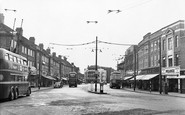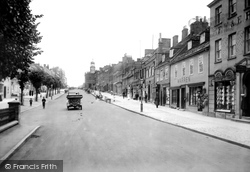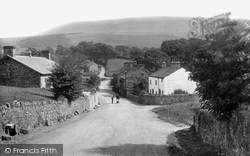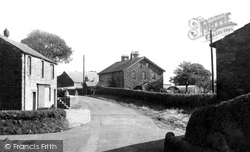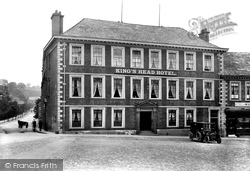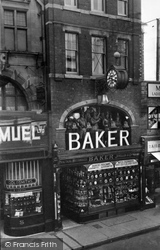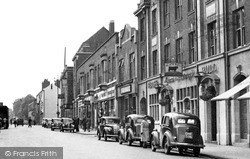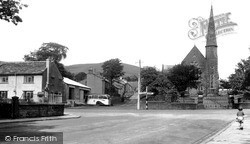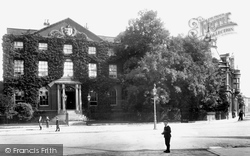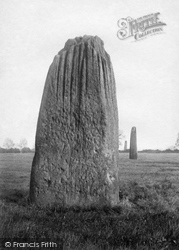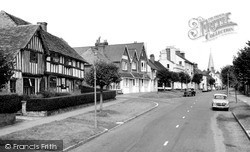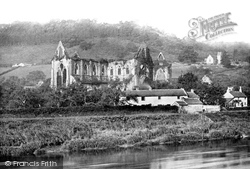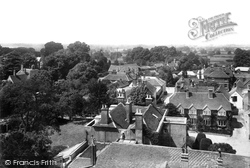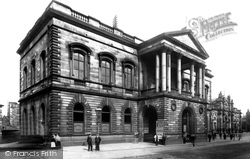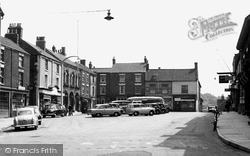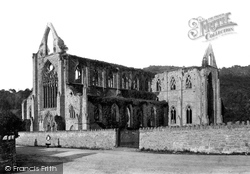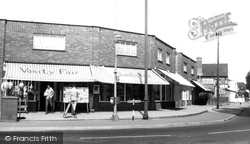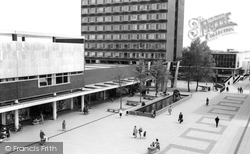Merry Christmas & Happy New Year!
Christmas Deliveries: If you placed an order on or before midday on Friday 19th December for Christmas delivery it was despatched before the Royal Mail or Parcel Force deadline and therefore should be received in time for Christmas. Orders placed after midday on Friday 19th December will be delivered in the New Year.
Please Note: Our offices and factory are now closed until Monday 5th January when we will be pleased to deal with any queries that have arisen during the holiday period.
During the holiday our Gift Cards may still be ordered for any last minute orders and will be sent automatically by email direct to your recipient - see here: Gift Cards
Places
Sorry, no places were found that related to your search.
Photos
Sorry, no photos were found that related to your search.
Maps
7,034 maps found.
Books
163 books found. Showing results 9,313 to 9,336.
Memories
22,913 memories found. Showing results 3,881 to 3,890.
St Faith`s.
My late mother-inlaw Gladys Ellison was Secretary in the administration at St Faiths until 1984 she started in about 1975? A school friend Jimmy Craske was also employed there. Gladys was a trained nurse at Whipps Cross Hospital in the mid ...Read more
A memory of Brentwood
No Electricity
My dad was the herdsman, and we lived at home farm. FOur of us were born at Anna Cottage from 1942-46, and there was no electricity till much later. it was all rather primitive, but happy times too. The dairy farm back then was a ...Read more
A memory of Swinton Grange by
Sad Times
I was at the home with my brother & sister we wer Ther cos our mam had just died I was 7 they put me in a strait jacket cos I was crying for my mam , I remember that play room with the black chimney sometimes it was lit n we got warm , I ...Read more
A memory of Hornsea by
Children's Home
I was at the home 1963 that place scared me for life awful place just awful
A memory of Hornsea by
1934 To 1961
I was born in Grove Avenue in 1934. Was not evacuated in the war .attended St Marys Church as a choir boy, went to St Marys. Infant school , then on to Orleans. Sec Leaving in 1949., after winning the Twickenham Schools Cricket ...Read more
A memory of Twickenham by
Best Year Of My Life Brian Bell Jnr
My grand parents and my father came from the village as well as aunties and uncles, Hugh and Jessie Bell north street. My granddad had the sheds at the rear of the old church now a garage.{next to the electricity sub ...Read more
A memory of Glenluce
Days Of Long Ago
Born in Dunfermline in 1946, but we lived in Cowdenbeath at 45 Blackburn Drive - in a postwar aluminum prefab. Attended Foulford School from '51 to '54 when we emigrated to Canada. I remember the "tunnel" open to the front of the ...Read more
A memory of Cowdenbeath
Flying Horse Hotel
I remember the flying horse hotel I have fond memories of my auntie Kath working in the hotel kitchen at 8 years of age I'd go down the allyway at the side and tap on a window through the metal grid with a pencil run down the ...Read more
A memory of Nottingham by
Growing Up In Govan In The 50's.
I have very happy memories of my childhood in Govan. I lived in an attic with my Mum, Dad and Brother. If it was wet outside everybody gathered at my close and we would run up and down the wooden stairs. The neighbours ...Read more
A memory of Govan
Little Ealing
We moved to Lawrence Road in South Ealing around 1966. My brothers and I went to Little Ealing Primary School (1969- 1977) followed by two more cousins. Mrs Lodge was my first teacher and I thought she was the most fabulous lady ever. I ...Read more
A memory of Ealing by
Your search returned a large number of results. Please try to refine your search further.
Captions
9,654 captions found. Showing results 9,313 to 9,336.
westwards up West Street to the Town Hall (left of centre), a Ford Model T passes the shops of Best, Warren and Spiller (right).
This ancient and beautiful village dates back to Saxon times. The beacon on Pendle Hill is said to be Saxon, and the field known as Kirkacre was in existence when Alfred the Saxon was chieftain.
Bashall Eaves stands on the banks of the river Hodder in the parish of Mitton.
Built as a town house for the lead mine-owner Charles Bathurst of Arkengarthdale c1720, its newly-fashionable hand-made bricks, three-storey height and eight bays must then have made it very prominent
One of Gloucester's best-known features is the ingenious clock that stands at first floor level above G A Baker & Sons in Southgate Street.
Glasgow boasts one of the world's finest municipal collections of art, now housed at Kelvingrove.
Whilst the open fields still surrounded Loughborough the town could not expand; later they were enclosed by law and the pattern of small fields emerged.
It was only a mile away that George Fox, the Quaker, stood on the 'nick' of Pendle in 1652 and declared himself moved to start a religious order, the Society of Friends.
At the top of the High Street stands this magnificent three-storey residence built in 1798 for the merchant Samuel Rolles, indicative of the wealth which came to the town in the 18th century
On the left, Marks and Spencer established a bazaar in 1932, later enlarging and heightening the building several times. The Co-op Bakery and Elite Café (now Saxone) has its awnings out.
The most notorious abbot of Furness Abbey was undoubtedly Alexander Banks. One William Case, on behalf of the people of Sellergarth, sued him in court in 1516.
The Devil's Arrows is nowadays composed of three stones. They stand in North Yorkshire, close to the A1: it is one of the most famous prehistoric monuments in the county.
Dating from the 1500s (and possibly earlier), the half- timbered building on the left fronting both the High Street and Hickmans Lane has had a chequered history.
It is difficult to imagine from this idyllic scene, including the parish church of St Mary on the hillside (right), that Tintern was once heavily industrialised.
One of the first known owners of the property was a member of the Brocke family by the name of Ayre. The earliest boundary was north of the stream known now as the Pip Brook.
In 1651, Sir Richard Weston of nearby Sutton Place embarked on his great enterprise to create the Wey Navigation and make the river commercially navigable from Guildford to the Thames, by straightening
In the foreground we see the roof of Bury House and its stables at the western end of The Bury.
The etching on the windows, 'Magistrates Room' and 'Solicitors Room', reminds us that the Magistrates' Courts were also housed here for many years.
Barton-upon-Humber was once a rival to the port of Kingston upon Hull on the other side of the river Humber, but it is now a much smaller settlement, and the Market Place confirms that most definitely.
The first brothers of the establishment came directly from Normandy. The remains to be seen today actually date from the abbey's rebuilding in the course of the 13th to the 15th centuries.
The roundabout is situated at the crossing of the Icknield Way (the A505) and the A10.
Hayling is linked to the mainland by a concrete road bridge that opened in 1956, replacing the wooden toll bridge.
Built as a town house for the lead mine-owner Charles Bathurst of Arkengarthdale c1720, its newly-fashionable hand-made bricks, three-storey height and eight bays must then have made it very prominent
In the medieval manorial rolls there are references to ancient roads and lanes that carry the same names today.
Places (0)
Photos (0)
Memories (22913)
Books (163)
Maps (7034)



